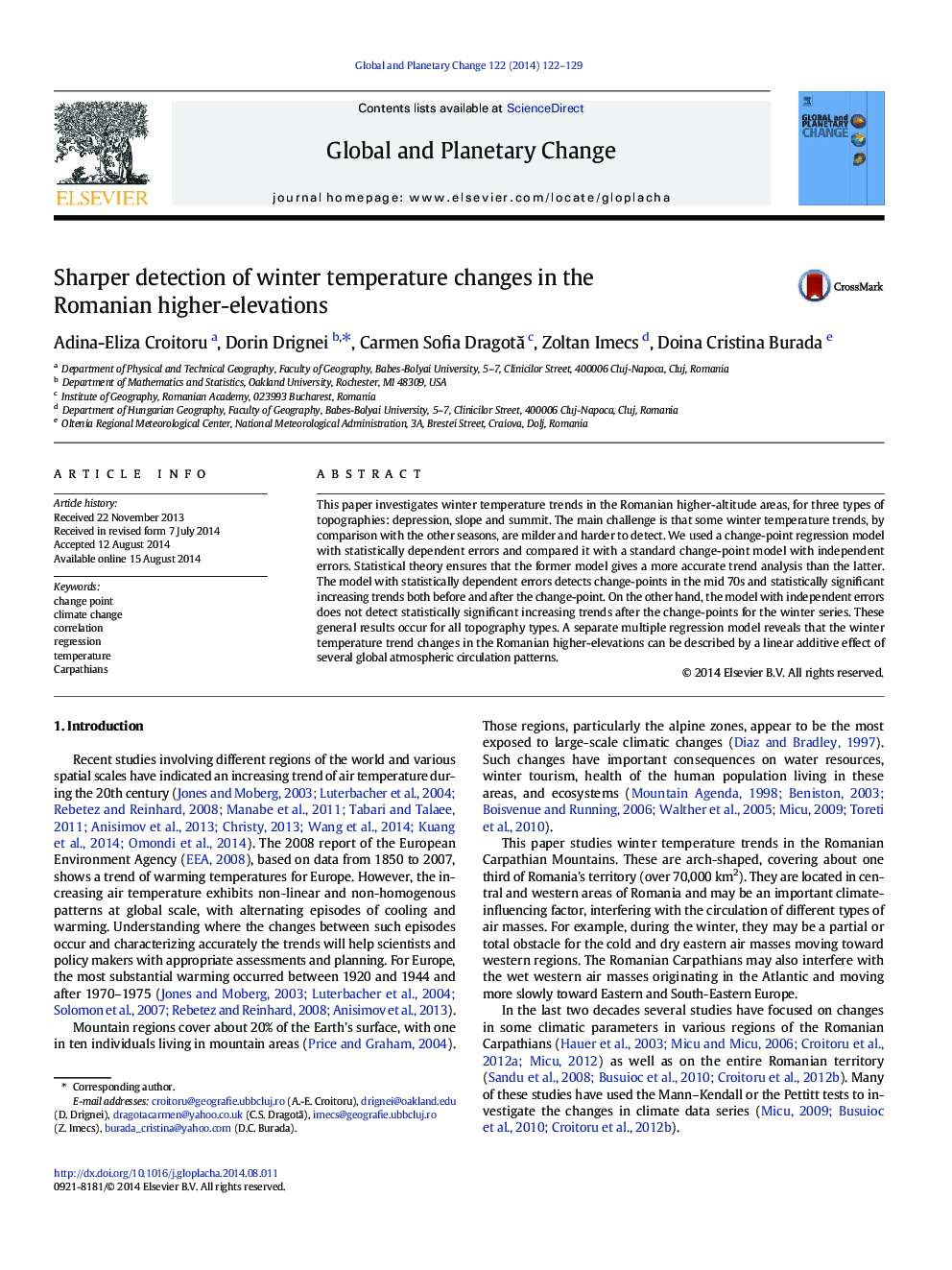| Article ID | Journal | Published Year | Pages | File Type |
|---|---|---|---|---|
| 6348178 | Global and Planetary Change | 2014 | 8 Pages |
â¢Change points exist in the mid '70s for winter temperatures.â¢The winter temperatures increase both before and after the change point.â¢The increasing trend is stronger before the change point and milder afterward.â¢Winter temperature is described by juxtaposing EA-WR, SCAND, and POL.
This paper investigates winter temperature trends in the Romanian higher-altitude areas, for three types of topographies: depression, slope and summit. The main challenge is that some winter temperature trends, by comparison with the other seasons, are milder and harder to detect. We used a change-point regression model with statistically dependent errors and compared it with a standard change-point model with independent errors. Statistical theory ensures that the former model gives a more accurate trend analysis than the latter. The model with statistically dependent errors detects change-points in the mid 70s and statistically significant increasing trends both before and after the change-point. On the other hand, the model with independent errors does not detect statistically significant increasing trends after the change-points for the winter series. These general results occur for all topography types. A separate multiple regression model reveals that the winter temperature trend changes in the Romanian higher-elevations can be described by a linear additive effect of several global atmospheric circulation patterns.
